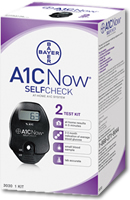People with diabetes face an increased risk of developing eye conditions. Regular yearly eye examinations with dilatation are essential. Learn more about the symptoms of eye problems and what to do about them.
- Elevated blood sugars put people with diabetes at a higher risk of developing serious eye problems such as retinopathy, cataracts and glaucoma.
- Diabetes is the leading cause of blindness for people in the United States between the ages of 20 and 74.
- Blurry vision is a possible short term complication of diabetes; don’t change your glasses right away. Often blurred vision is temporary and caused by high blood sugars. Get blood sugar levels back on track to correct blurry vision. It can take up to three months after your blood sugar is under control for vision to return to normal. Ongoing blurry vision can also be a symptom of a more serious eye problem and may need to be addressed by a physician.
- Cataracts fog or cloud the clear lens of an eye, causing glared or blurry vision with an inability to focus light. People with diabetes tend to develop cataracts earlier than others and it progresses faster.
- Treatments for cataracts include surgery, glasses and contact lenses. Surgery removes the cloudy lens and replacing it with a clear lens. The plastic lens is called an intraocular lens (IOL). After surgery, glasses or contacts may also be used. Early cataracts are sometimes managed with eyeglasses or contact lenses. It is extremely important to have your blood sugars controlled prior to this surgery.
- Glaucoma develops when fluid in the eye does not drain properly due to increased pressure. Often there are no symptoms until the disease advances. Symptoms could include blurred vision, headaches, eye pain, watery eyes, loss of vision and haloing around lights. Glaucoma causes nerve, tissue and vessel damage.
 Treatments for glaucoma include laser procedures, oral medication, specialized eye drops, or surgery.
Treatments for glaucoma include laser procedures, oral medication, specialized eye drops, or surgery.- It is essential for people with diabetes to get an annual eye exam. Yearly eye examinations should include a dilated eye exam and glaucoma screening.
- Retinopathy is a vascular complication that occurs due to elevated blood sugars. It affects the cells in the back of the eye, the retina; the retina converts light into images. The longer you have diabetes, the higher the risk of developing retinopathy. Better control of your blood sugar definitely reduces the risk. Using blood pressure monitors to regularly check blood pressure as well as using A1C home testing kits to determine your 3 month average blood sugar level may keep your numbers more on the right track. Don’t smoke and maintain proper cholesterol levels to minimize the risk of developing retinopathy.
- There are three types of retinopathy. Background retinopathy causes blood vessel damage with no vision problems. With maculopathy, there is damage in the macula area of the eye which reduces vision. New blood vessels begin to grow in the back of the eye with proliferative retinopathy. There is a lack of oxygen in the eye due to vascular disease. As a result, vessels in the eye thin and become occluded, remodeling themselves. Mild retinopathy is treated by stabilizing blood sugar. Advanced cases are treated with surgery or intraocular steroid injections.
Common eye conditions with diabetes do not have to lead to severely impaired vision. Make sure to schedule your annual eye examination to ensure early detection of eye problems. Always wear sunglasses outdoors even when it is cloudy to reduce UV damage to the eyes.






Leave A Comment